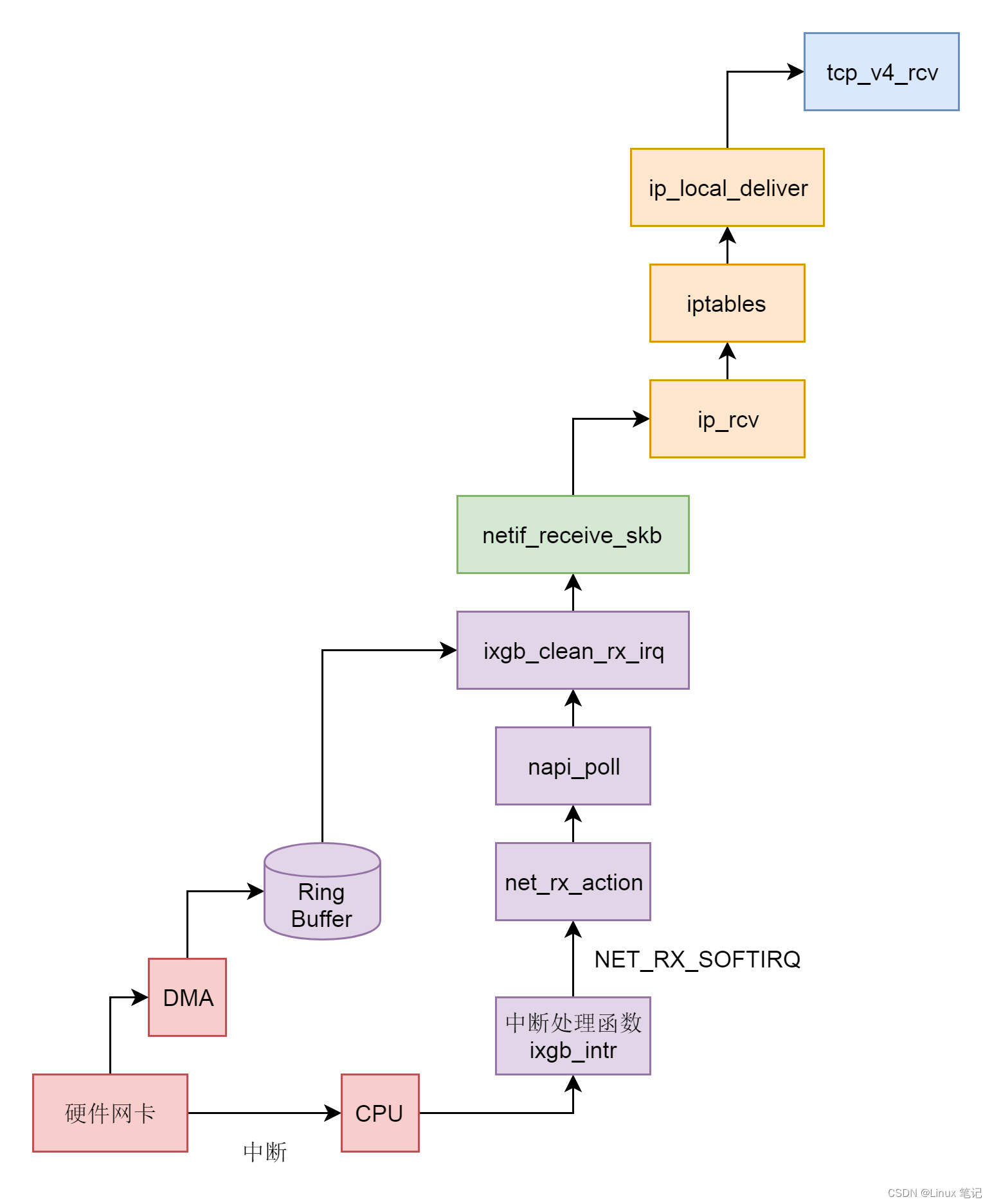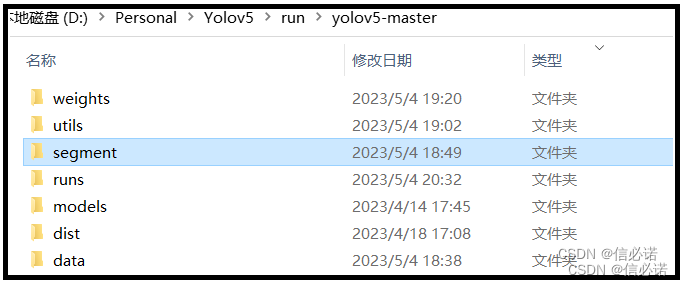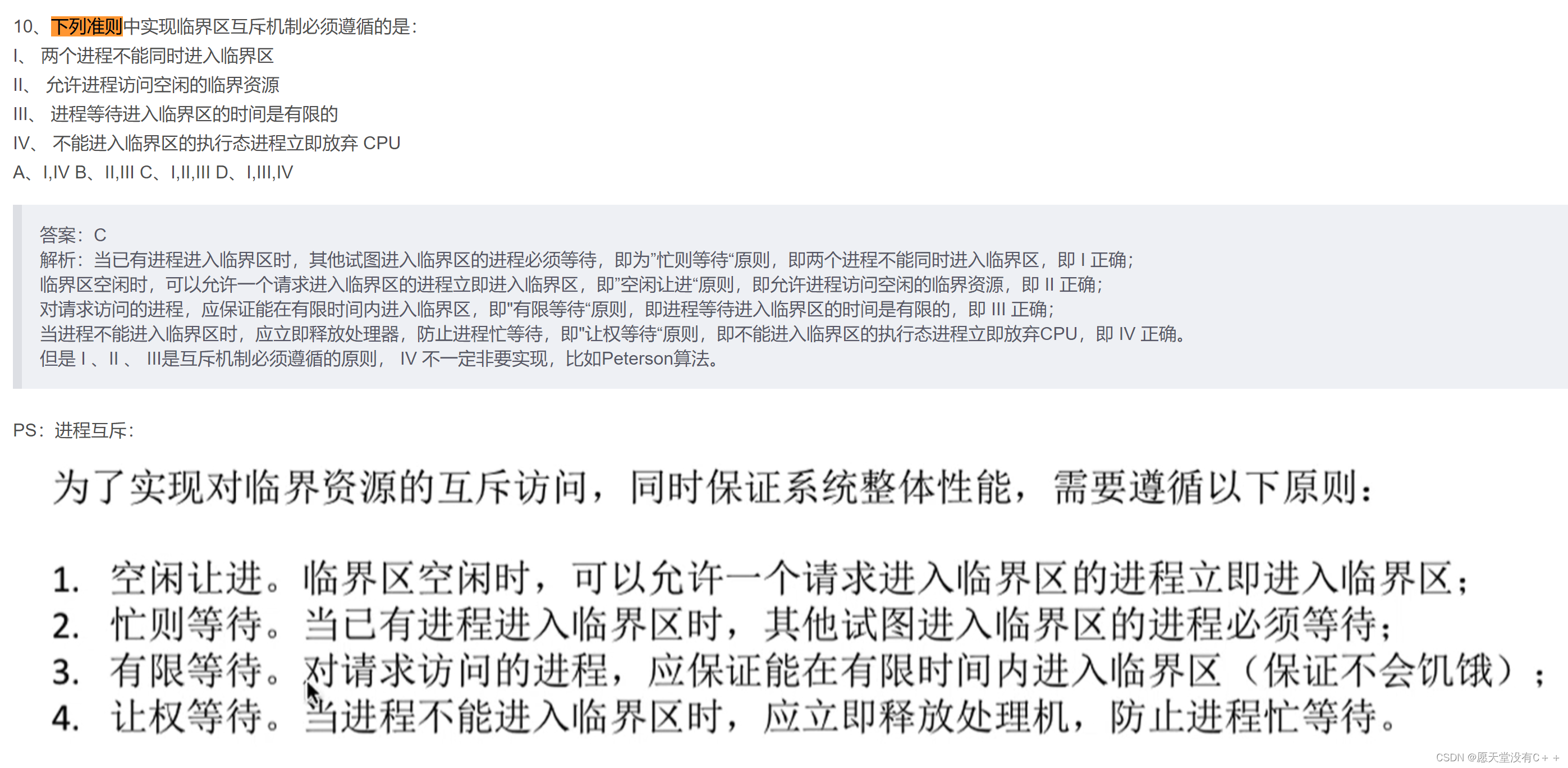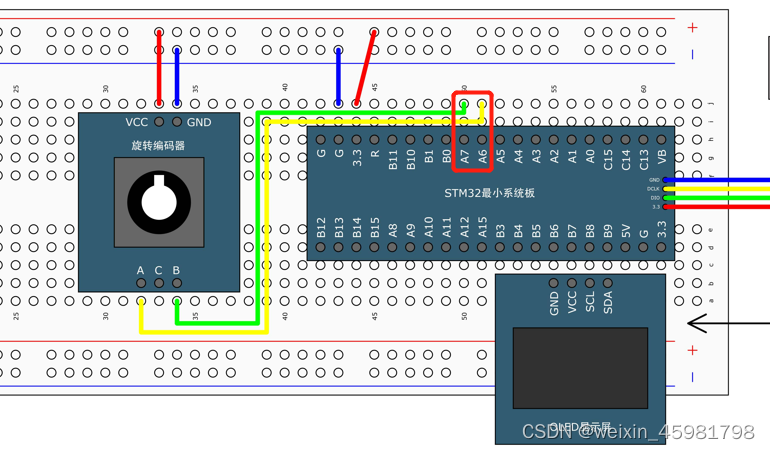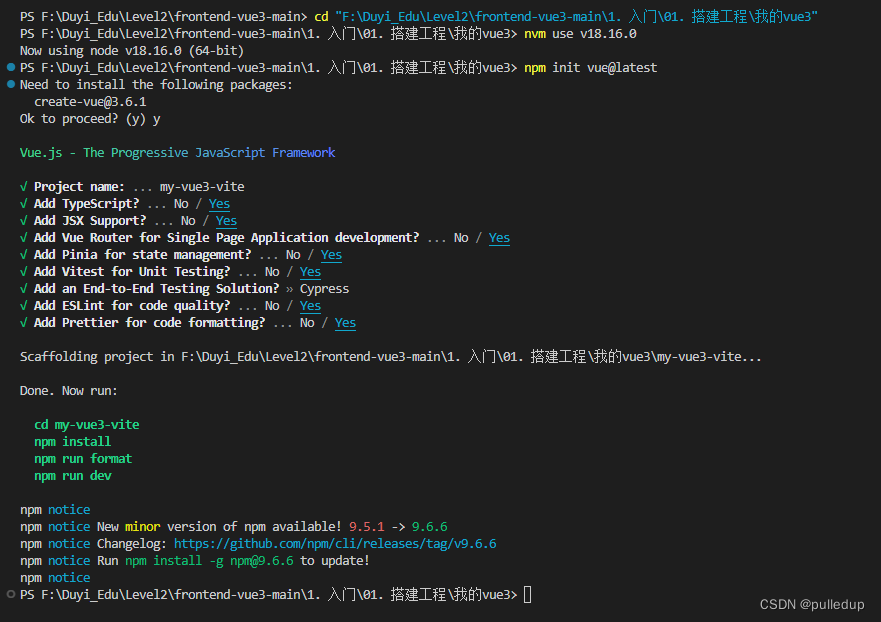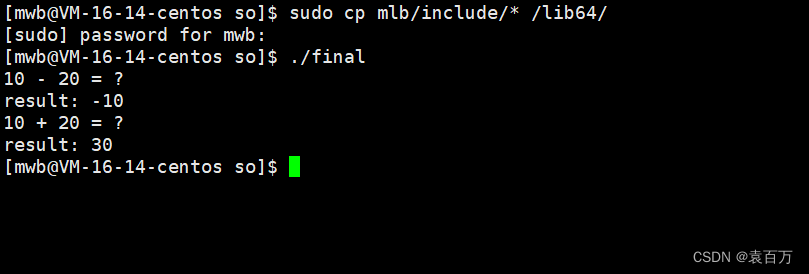目录
概述
算法
调整策略
源码
RBTree.h
test.cpp
概述
红黑树,是一种二叉搜索树,每一个节点上有一个存储位表示节点的颜色,可以是Red或Black。
通过对任何一条从根到叶子的路径上各个节点着色方式的限制,红黑树确保没有一条路径会比其他路径长上两倍,因而是接进平衡的。
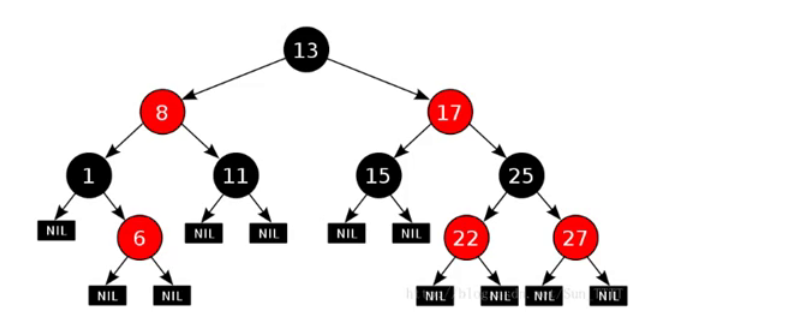
红黑树性质:
- 每个节点不是红色就是黑色
- 根节点是黑色的
- 红节点的两个孩子一定是黑色的;黑节点的两个孩子不一定是红色的。没有连续的红节点
- 对于每个节点,从该节点到其后所有后代叶节点的简单路径上,均包含相同数目的黑节点
- 每个叶子节点都是黑色的(NIL空节点)
算法
红黑树在设计的时候,插入策略与AVL树一样,只是插入之后的调整策略与AVL不同(旋转策略是一样的,但是红黑树需要考虑变色且无需再考虑平衡因子)
只看遍历的时间复杂度的话,AVL树的时间复杂度是低于红黑树的,因为AVL树的时间复杂度是无限接近于O(log_2 n),而红黑树的时间复杂度是O(log_2 n) ~ 2 * O(log_2 n),但这才系统层面的时间损失很小。
从调整策略的角度,红黑树的调整次数与旋转次数都远低于AVL树。所以综合来看,红黑树的性能是优于AVL树的,map和set的底层封装的也正是红黑树。
调整策略
红黑树的根节点一定是黑色,新插入的节点默认为是红色。
当新插入一个红色节点cur时,先观察cur的父节点parent,如果父节点是黑色,则无需调整;如果父节点也是红节点,那么再观察cur节点的叔叔节点uncle,根据uncle节点的情况进行调整。
红黑树调整策略的核心思路:不能出现连续的红色节点,每条路径的黑色节点数量一样
调整策略分为三种情况:
- 情况1:父节点parent和叔叔节点uncle都是红色,此时只需变色调整,不需旋转,并向上调整
- 情况2:父节点parent为红色,叔叔节点不存在或为黑色,cur节点和parent节点都同为左节点或同为右节点,此时需要左单旋或者右单旋,无需向上调整
- 情况3:父节点parent为红色,叔叔节点不存在或为黑色,cur节点为左节点时parent节点为右节点,或者cur节点为右节点时parent节点为左节点,此时需要左右双旋或者右左双旋,无需向上调整
情况1:parent节点是红色,uncle节点也是红色
调整方法:parent节点与uncle节点变为黑色,祖父节点grandparent节点变为红色,然后将cur变为祖父节点,parent节点依然为cur节点的父节点,向上调整,直到出现parent节点为空,最后再将根节点置为黑色。如图:

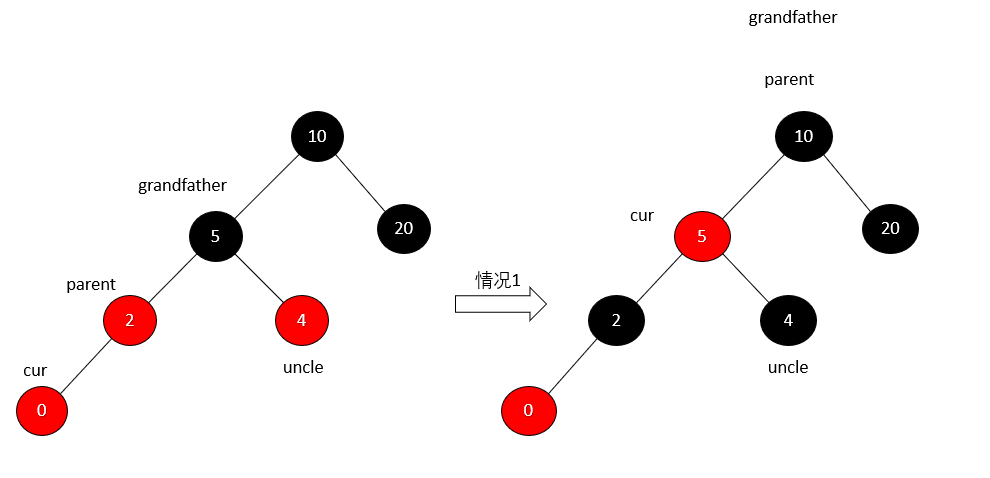
情况2: 父节点parent为红色,叔叔节点不存在或为黑色,cur节点和parent节点都同为左节点或同为右节点
调整方法:以祖父节点grandparent为轴点进行左单旋或则右单旋,父节点变成黑色,祖父节点变成红色。如图:
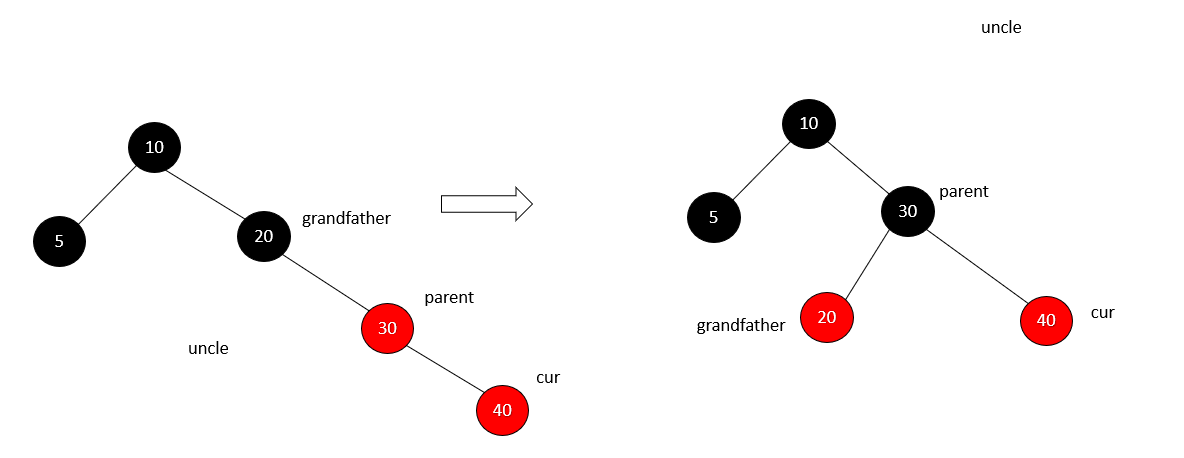
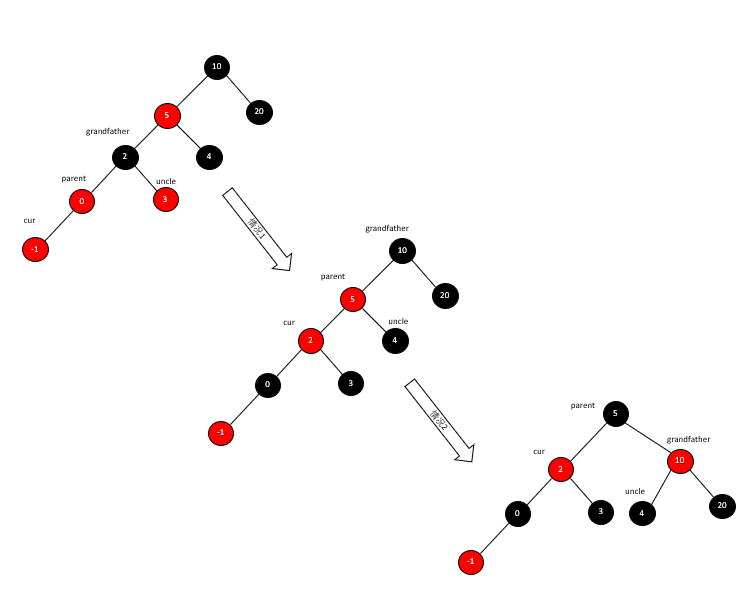
情况3:父节点parent为红色,叔叔节点不存在或为黑色,cur节点为左节点时parent节点为右节点,或者cur节点为右节点时parent节点为左节点
调整方法:先以parent节点为轴心进行左单旋或者右单旋,再以grandparent节点为轴心进行与上一步操作相反的单旋,最后将cur节点变成黑色,将grandparent节点变为红色
示例:将数列{ 16, 3, 7, 9, 26, 18, 14, 15, 13, 11 }按顺序插入红黑色中


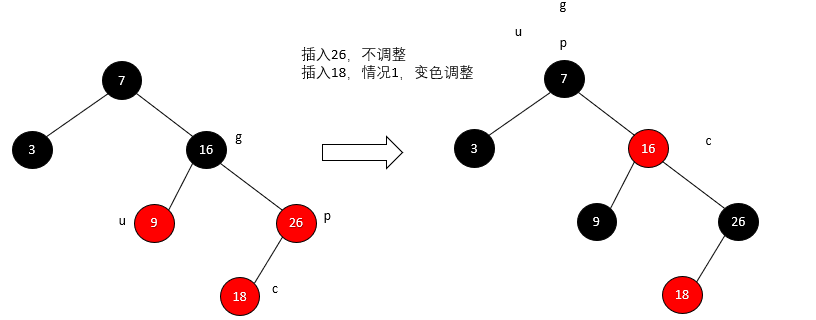

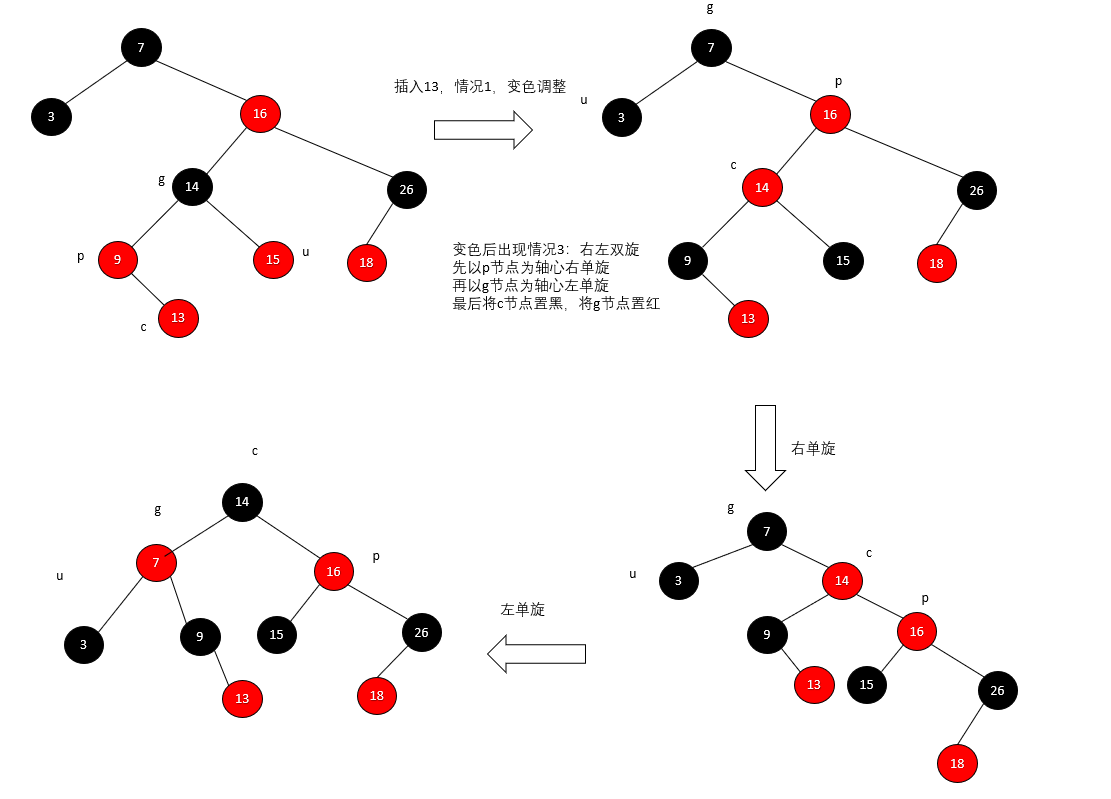

源码
RBTree.h
#include <iostream>
enum Colour
{
RED,
BLACK
};
template<class K, class V>
struct RBTreeNode
{
std::pair<K, V> _kv;
RBTreeNode<K, V>* _left;
RBTreeNode<K, V>* _right;
RBTreeNode<K, V>* _parent;
Colour _col;
RBTreeNode(const std::pair<K, V> kv)
: _kv(kv), _left(nullptr), _right(nullptr), _parent(nullptr), _col(RED)
{}
};
template<class K, class V>
class RBTree
{
typedef RBTreeNode<K, V> Node;
public:
bool insert(const std::pair<K, V>& kv)
{
if (_root == nullptr)
{
_root = new Node(kv);
_root->_col = BLACK;
return true;
}
Node* parent = nullptr;
Node* cur = _root;
while (cur)
{
if (cur->_kv.first < kv.first)
{
parent = cur;
cur = cur->_right;
}
else if (cur->_kv.first > kv.first)
{
parent = cur;
cur = cur->_left;
}
else
{
return false;
}
}
cur = new Node(kv);
cur->_col = RED;
if (parent->_kv.first < kv.first)
{
parent->_right = cur;
cur->_parent = parent;
}
else
{
parent->_left = cur;
cur->_parent = parent;
}
// 变色、旋转
while (parent && parent->_col == RED)
{
Node* grandfather = parent->_parent;
if (parent == grandfather->_left)
{
Node* uncle = grandfather->_right;
if (uncle && uncle->_col == RED)
{
// 情况1:叔叔存在且为红
parent->_col = uncle->_col = BLACK;
grandfather->_col = RED;
cur = grandfather;
parent = cur->_parent;
}
else
{
if (cur == parent->_left)
{
// 情况2: 右单旋
rotate_right(grandfather);
parent->_col = BLACK;
grandfather->_col = RED;
}
else
{
// 情况3: 左右双旋
rotate_left(parent);
rotate_right(grandfather);
cur->_col = BLACK;
grandfather->_col = RED;
}
break;
}
}
else
{
Node* uncle = grandfather->_left;
if (uncle&& uncle->_col == RED)
{
parent->_col = uncle->_col = BLACK;
grandfather->_col = RED;
cur = grandfather;
parent = cur->_parent;
}
else
{
if (cur == parent->_right)
{
// 情况2: 左单旋
rotate_left(grandfather);
parent->_col = BLACK;
grandfather->_col = RED;
}
else
{
// 情况3: 右左双旋
rotate_right(parent);
rotate_left(grandfather);
cur->_col = BLACK;
grandfather->_col = RED;
}
break;
}
}
}
_root->_col = BLACK;
return true;
}
void rotate_right(Node* parent)
{
Node* subL = parent->_left;
Node* subLR = subL->_right;
parent->_left = subLR;
if (subLR)
{
subLR->_parent = parent;
}
subL->_right = parent;
Node* ppNode = parent->_parent;
parent->_parent = subL;
if (ppNode == nullptr)
{
subL->_parent = nullptr;
_root = subL;
}
else
{
if (parent == ppNode->_left)
{
ppNode->_left = subL;
}
else
{
ppNode->_right = subL;
}
subL->_parent = ppNode;
}
}
void rotate_left(Node* parent)
{
Node* subR = parent->_right;
Node* subRL = subR->_left;
parent->_right = subRL;
if (subRL)
{
subRL->_parent = parent;
}
subR->_left = parent;
Node* ppNode = parent->_parent;
parent->_parent = subR;
if (ppNode == nullptr)
{
subR->_parent = nullptr;
_root = subR;
}
else
{
if (parent == ppNode->_left)
{
ppNode->_left = subR;
}
else
{
ppNode->_right = subR;
}
subR->_parent = ppNode;
}
}
void in_order()
{
_in_order(_root);
std::cout << std::endl;
}
bool is_balance()
{
if (_root == nullptr)
{
return true;
}
if (_root->_col != BLACK)
{
return false;
}
int ref = 0;
Node* left = _root;
while (left)
{
if (left->_col == BLACK)
{
++ref;
}
left = left->_left;
}
return _is_balance(_root, 0, ref);
}
private:
void _in_order(Node* root)
{
if (root == nullptr)
{
return;
}
_in_order(root->_left);
std::cout << root->_kv.first << "; " << root->_kv.second << std::endl;
_in_order(root->_right);
}
// 检查是否有联系的红节点
bool _is_balance(Node* root, int blackNum, const int ref)
{
if (root == nullptr)
{
if (blackNum != ref)
{
std::cout << "路径黑色节点跟最左路径不相等" << std::endl;
return false;
}
return true;
}
if (root->_col == RED && root->_parent->_col == RED)
{
std::cout << "出现连续红节点: " << root->_kv.first << ", " << root->_parent->_kv.first << std::endl;
return false;
}
if (root->_col == BLACK)
{
++blackNum;
}
return _is_balance(root->_left, blackNum, ref)
&& _is_balance(root->_right, blackNum, ref);
}
private:
Node* _root = nullptr;
};test.cpp
#include "RBTree.h"
#include <ctime>
void test1_RBTree()
{
int arr[] = { 16, 3, 7, 9, 26, 18, 14, 15, 13, 11 };
//int arr[] = { 4, 2, 6, 1, 3, 5, 15, 7, 16, 14 };
RBTree<int, int> t;
for (auto& e : arr)
{
t.insert(std::make_pair(e, e));
}
t.in_order();
std::cout << std::endl;
std::cout << t.is_balance() << std::endl;
}
void test2_RBTree()
{
RBTree<int, int> t;
for (int i = 0; i < 10000; ++i)
{
int x = rand();
t.insert(std::make_pair(x, x));
}
//t.in_order();
//std::cout << std::endl;
std::cout << t.is_balance() << std::endl;
}
int main()
{
srand(time(0));
test1_RBTree();
test2_RBTree();
return 0;
}




